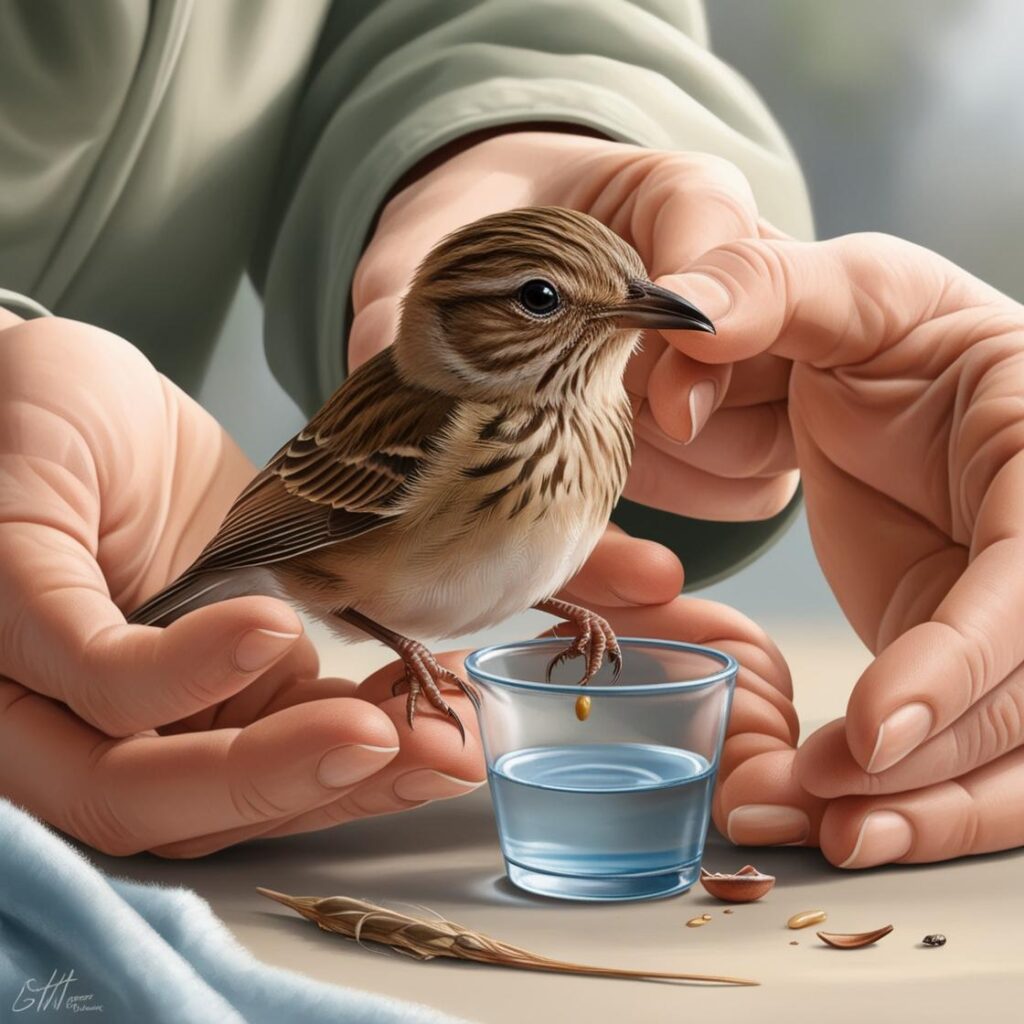Birds are enchanting creatures that captivate our hearts with their vibrant colors and melodious songs. However, they are often vulnerable to injuries from various factors, including collisions with windows, predatory attacks, and environmental hazards. If you encounter an injured bird, it’s crucial to know how to provide the right care to assist in their recovery. This guide aims to educate you on the steps to safely and effectively care for an injured bird, ensuring it receives the best possible chance of healing and returning to its natural habitat.
Understanding the Cause of Injury
Before taking action, it is essential to assess the bird’s condition and attempt to identify the cause of its injury. Injuries can stem from numerous sources, including:

- Collisions: Birds often collide with windows or vehicles, resulting in injury.
- Predation: Attacks from other animals may leave birds wounded or traumatized.
- Environmental Hazards: Sharp objects, toxins, or severe weather conditions can lead to injuries.
- Illness: Sometimes, a bird may appear injured due to underlying health issues that require professional attention.
Recognizing the cause can inform your approach to treatment. Regardless of the source, a cautious and compassionate attitude is paramount when handling an injured bird.
Initial Assessment and Safety Precautions
When you discover an injured bird, prioritize your safety as well as the bird’s comfort. Follow these steps:
- Observe from a Distance: Assess the situation without too much interference. Look for signs of distress, physical injuries, or unusual behavior from the bird.
- Approach Cautiously: If the bird appears unable to fly or is in immediate danger, carefully approach it. Many birds may panic when they feel threatened, so a calm demeanor is essential.
- Wear Protective Gear: If necessary, wear gloves to protect yourself from potential scratches or bites. Some birds can be aggressive when injured.
- Containment: Use a towel or cloth to gently cover the bird, providing a sense of security while preventing it from flapping its wings or escaping.
Providing Temporary Care
Once you have the bird contained and secured, your next steps involve providing immediate comfort and care:
1. Create a Safe Space:
Prepare a quiet, warm, and dark environment that mimics a nest. An ideal setup includes:
- A cardboard box or a pet carrier lined with soft materials such as towels or cloths.
- Ventilation holes to allow fresh air circulation.
- Minimal noise and activity to reduce stress.
2. Check for Injuries:
Carefully assess the bird for visible injuries, such as fractures, bleeding, or wounds. Avoid examining too closely if the bird shows signs of stress. If possible, take note of:
- Wounds: Look for bleeding or open sores.
- Limbs: Check for broken limbs or unusual angles.
- Eye Severity: Observe the eyes for swelling or discharge.
3. Provide Water:
Hydration is critical for recovery. Provide a shallow dish of water for the bird if it can drink safely. Avoid forcing water into the bird’s mouth, as this could lead to choking or aspiration.
4. Avoid Feeding Immediately:
Unless instructed by a veterinarian or a wildlife rehabilitator, avoid feeding the bird right away. Some injured birds may have difficulty digesting food, and feeding them can lead to additional complications.
Seeking Professional Help
While your initial care can make a difference, it’s imperative to consult a professional for comprehensive treatment. Here’s how to find help:
- Wildlife Rehabilitators: Search for licensed wildlife rehabilitators in your area. They have the necessary training and resources to treat injured wildlife.
- Veterinarians: Some veterinarians specialize in avian care. Contact a local veterinary clinic and inquire about their services for birds.
- Local Wildlife Organizations: Many regions have wildlife rescue organizations that can provide guidance or assistance in handling injured birds.
Preparing for Transport
If you need to transport the bird to a rehabilitator or veterinarian, follow these steps to ensure a smooth journey:
- Secure the Bird: Make sure it is securely contained in the box or carrier with ventilation holes.
- Avoid Excessive Handling: Minimize movement and avoid unnecessary jostling during transport.
- Maintain a Calm Atmosphere: Place a cover over the container to darken the environment and reduce stress.
- Drive Carefully: Transport with caution to avoid sudden movements that could further harm the bird.
Caring for Recovery at Home
If you are instructed to care for an injured bird at home temporarily, here are essential tips for rehabilitation:
1. Monitor Health:
Keep a close eye on the bird’s condition. Look for changes in behavior, eating patterns, and overall energy levels. If the bird appears to be worsening, seek immediate help.
2. Create Enrichment Activities:
A recovering bird may benefit from mental stimulation. Introduce simple toys or perches to encourage exploration and movement, as long as they do not interfere with the bird’s recovery.
3. Feeding:
If the rehabilitator provides guidance on what and how to feed, follow their instructions closely. Birds have specific dietary needs, varying from seed blends to fruits or insects, depending on the species.
4. Exercise:
Encourage gentle exercise within a safe environment. Allowing the bird some space to move can aid in its recovery, but monitor closely to prevent further injury.
5. Preparation for Release:
If the bird heals sufficiently, consult with the rehabilitator regarding the appropriate time and method for release into the wild. Choose a location that is safe and familiar to the bird to increase its chances of survival.
Conclusion
Caring for an injured bird is a noble and compassionate act that requires patience, knowledge, and a strong sense of responsibility. By understanding the necessary steps, providing a safe environment, and seeking professional help, you can play a pivotal role in the bird’s recovery journey. Remember that while your efforts are impactful, expertise from rehabilitators and veterinarians is often required for successful rehabilitation and release. Through nurturing our feathered friends, we contribute positively to wildlife conservation and the delicate balance of our ecosystem.